What are the Most Vicious Dinosaurs?
Table of Contents
As a general idea, you would not want to meet any of the most dangerous dinosaurs that roamed during the Mesozoic Era – but in reality, some of these giants were much, much riskier to cross paths with than others. Below are our 10 raptors, tyrannosaurs, and other types of dinosaurs that easily could have eaten you for dinner (or turned you into a compressed, shaking load of bone fragments and inner organs) quicker than you can scream “Jurassic Park”.
Paleontologists have discovered numerous dinosaur fossils throughout history. Dinosaurs were an extraordinarily diverse group of animals, with some as little as chickens and others the size of multiple trucks. Similarly, their general aggressiveness varied widely, with some being much more passive than others. This post investigates and rates the ten deadliest dinosaurs that ever lived. It gives a brief description of each animal’s size, behavioral tendencies, and basic traits.
10. Stegosaurus
You might not expect to see a small-headed and small-brained vegetarian like Stegosaurus on top of the most harmful dinosaurs – but concentrate on the other part of this herbivore’s enormous body and you will notice a devastating spiked tail which could quickly smash the head of a starving Allosaurus.
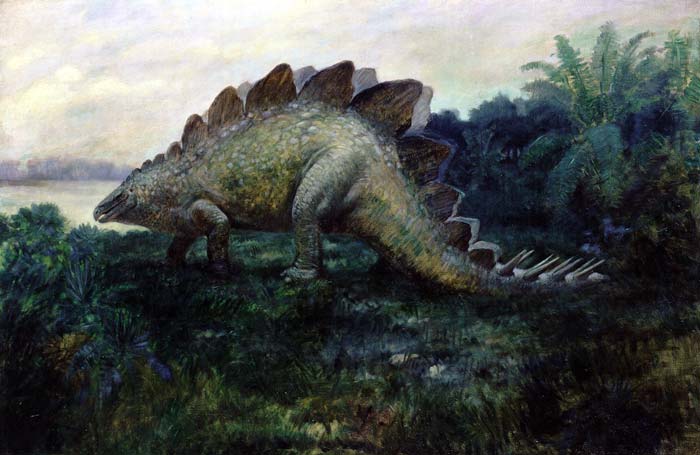
The thagomizer (named like this after a well-popular cartoon) assisted to make up for Stegosaurus’ deficiency of intellect and fastness, so you can think about an imperiled Stegosaurus failing down on the ground and moving its tail nervously in all directions.
9. Utahraptor
Velociraptor and Deinonychus are in all the news, but for actual killing skills, no other raptor was riskier than Utahraptor, the mature ones being able to weigh almost a ton (compared to just 200 lbs, top, for an extremely large Deinonychus). At Utahraptor, the rounded claws of its raptor close relatives reached incredible dimensions, just like the distinction between an ancient broadsword and a European military blade.
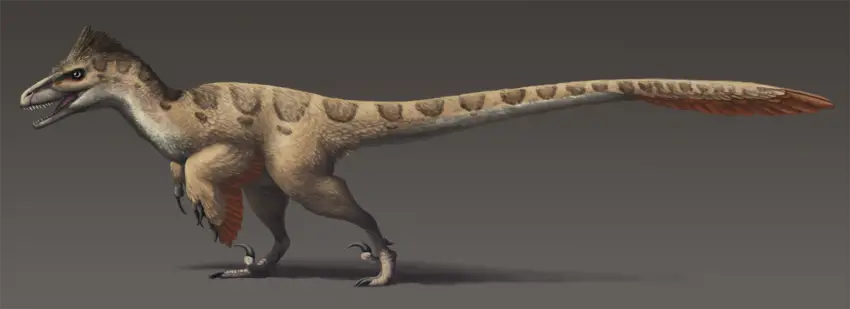
Strangely, this giant-sized animal lived more than 50 million years before the popular descendants, which were significantly smaller and a lot faster.
8. Diplodocus
You might be thinking now that Diplodocus is not supposed to be on top of dangerous animals. Diplodocus, that soothing, long-necked vegetarian that looked like a gentle giant in all dinosaur movies?
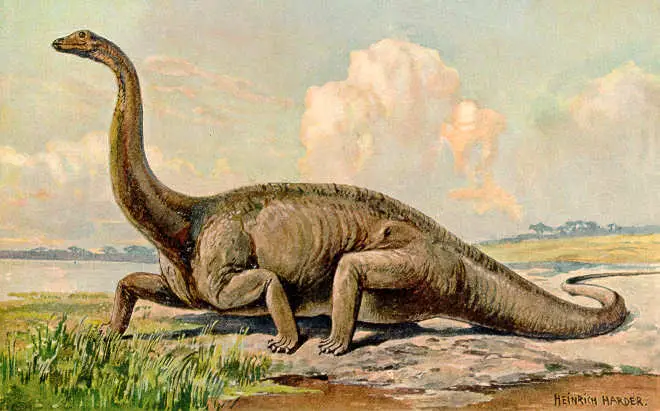
Well, the truth is that this same Diplodocus was also armed with a slimmer, 20-foot tail that (some specialists believe) it could be used as a whip to keep its enemies, like Allosaurus, at a respectable distance. Of course, this prehistoric animal (and the other titanosaurs and sauropods) could basically squish its opponents flat with just one well-placed kick of its back feet, but that is much less realistic.
7. Spinosaurus
In approximately the same bodyweight category as Tyrannosaurus Rex and Giganotosaurus, the North African Spinosaurus was endowed with an extra transformative advantage: it is the first known swimming dinosaur.
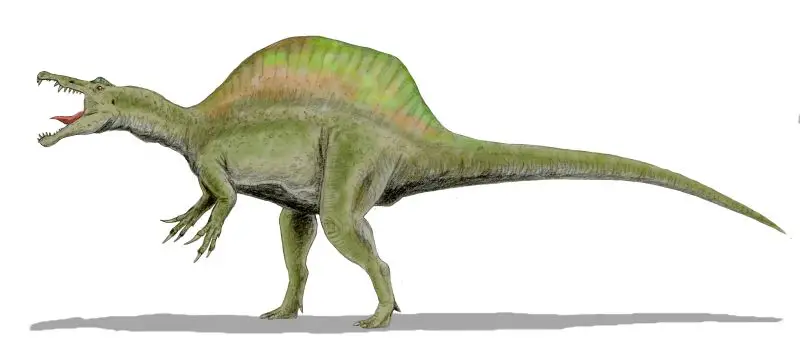
This creature was one of the first to swim, and it was a vicious one at that. As if that wasn’t enough to make this beast dangerous, it was also among the largest predators. Because of its paddle-like tail and webbed feet, the Spinosaurus would easily seek animals in the water.
The 10-ton killer spent its entire day in and around waters, pinning the prey between its large, crocodile-like muzzle and appearing like a shark to scare the smaller-sized, landbound dinosaurs. This giant might even have met sometimes the equally sized crocodile Sarcosuchus, or Super Croc, absolutely one of the impressive fights of the middle Cretaceous era.
6. Tyrannosaurus Rex
We will never find out if Tyrannosaurus Rex was especially fiercer or more frightening than the other, less well-known tyrannosaurs like Alioramus and Albertosaurus – or even if it searched for live prey or was feeding and spending most of the time eating already-dead corpses.
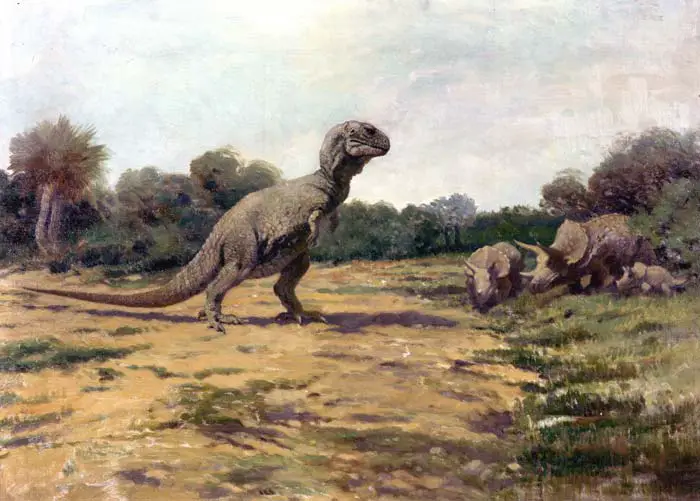
Whatever the situation might have been, there is no doubt that T. Rex was a completely efficient killer animal when it was needed, with its 5 to 8 tons weight and large head armed with many sharp teeth.
Though, you have to admit that its small arms gave it a little bit of a comic look.
5. Giganotosaurus
During the old Cretaceous era, the dinosaurs in South America were usually larger and more aggressive than their relatives elsewhere in the world. The best example is Giganotosaurus, a three-fingered, 8 to 10 tons, romping, stomping killer whose fossils have been discovered near to those of killed Argentinosaurus, one of the largest dinosaurs ever seen on our planet. The unavoidable conclusion: Giganotosaurus was maybe one of the very few theropods capable to take down a massive adult titanosaur (or, at least, the more vulnerable young dinosaurs).
4. Troodon
The killing potential is not always a matter of giant dimensions or heavy weapons. Troodon had a weight of only 150 lbs (about as heavy as a full-grown man), and it did not have long claws or scary-looking jaws.
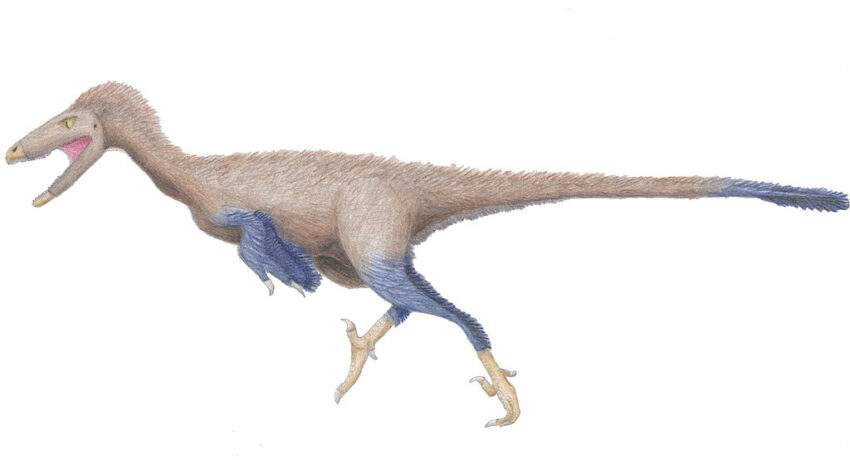
What differentiated this theropod from the big dinosaurs was its relatively large brain, in comparison to other meat-eating dinosaurs of the Cretaceous era, and its assumed capability to hunt in medium packs during the dark nights (the clue is represented by its huge eyes). The baseline: three or four coordinated Troodons might well have been comparative in danger to a single adult T. Rex.
3. Ankylosaurus
Ankylosaurus was one of Stegosaurus’ close relatives and these dinosaurs fought with their opponents with identical methods. While Stegosaurus had a massive “thagomizer” at the end of its long and powerful tail, Ankylosaurus was prepared with a large, hundred-pound tail, the late Cretaceous version of an ancient mace.
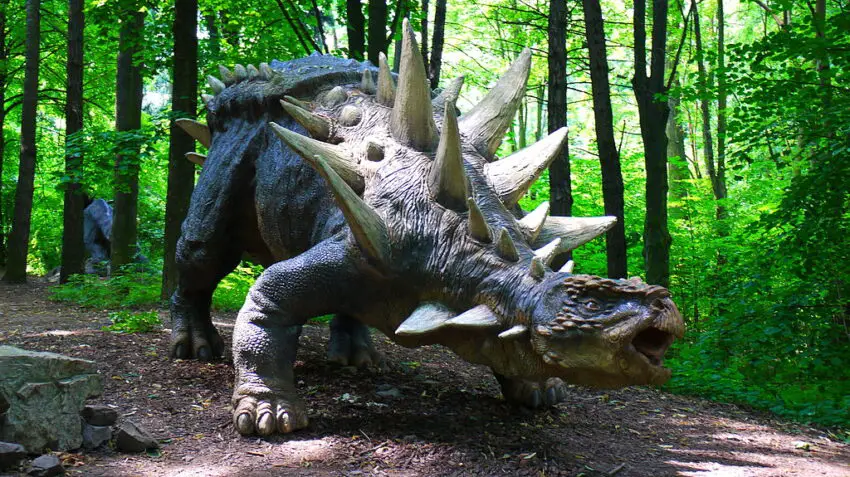
The Ankylosaurus was a herbivore, and you might be thinking how a plant-eater could be a menace. Nevertheless, herbivores should not be underestimated, as these mammals have different means to protect themselves from those terrible meat-eaters. The Ankylosaurus, for example, fought off predators with its club-like tail.
The well-aimed moves of the tail could easily crack the back leg of an attacking Tyrannosaurus Rex, or at least knock out some of its sharp teeth, but some experts think that it might also have been used in their intra-species fights during the mating season.
2. Allosaurus
It can be tricky to count how many members existed of a specific species, based just on fossils found on our planet. But if we accept to make that speculation, then Allosaurus was a more dangerous killer than the (many millions of years later) T. Rex – numerous remains of this 3-ton, intense, strong-jawed theropod have been found across the U.S.
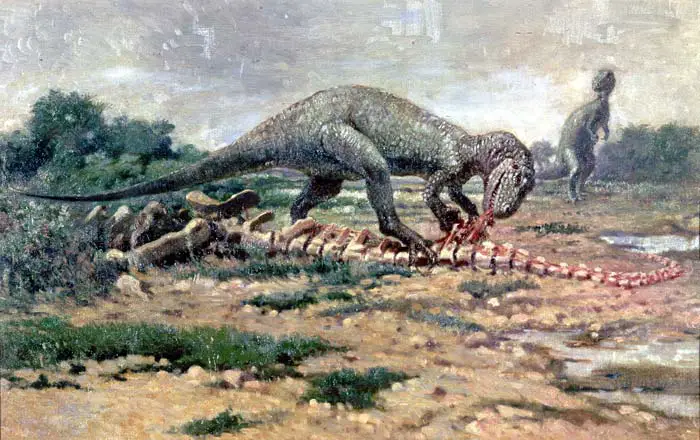
The Allosaurus was deadly due to important traits such as serrated teeth and sharp claws, but its strength actually made it a threat. Because of its strength, this dinosaur could take down animals three times its own size! Scientists believe this beast had a keen sense of smell and could easily detect low-frequency sounds, both of which are important hunting characteristics.
As dangerous as it was, however, Allosaurus was not very smart – a number of grownups perished at only one quarry in the state of Utah, stuck in strong muck while they were drooling over their already-trapped food.
1. Majungasaurus
Majungasaurus, sometimes called also Majungatholus, was known as the “cannibal dinosaur” by the media, and even if this could be overstating the whole situation, it does not mean that this carnivore’s popularity is entirely untrue.
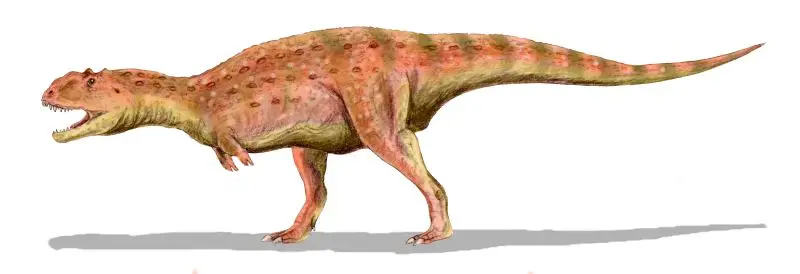
While other dinosaurs were dangerous because of their gigantic size, sharp claws, and hunting methods, the Majungasaurus joins this list due to the manner in which it murdered animals. This beast would chomp with its enormous jaws and play until it died. The finding of old Majungasaurus fossils with other Majungasaurus teeth marks is a real clue that these 1-ton theropods hunted one another (maybe after they were already weakened), even if they spent the majority of the time scarring the smaller shaking dinosaurs from the late Cretaceous.
